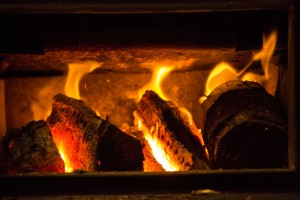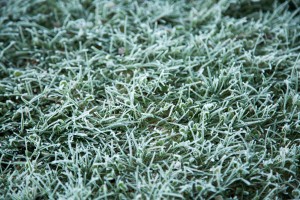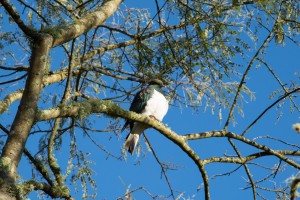The continuation! I think every russian speaking Aucklander was at least showing off once on Facebook about New Zealand “winter”, how “cold” it is. Attaching metservice screenshots or making selfies on a sunny, warm day with a caption “This is a winter”, “coldest winter day” and so on. Which usually doesn’t get noticed, doesn’t get lots of likes, shares and comments. The thing is, most of their friends are still living in Russia, which, as you know, is located in Northern hemisphere, where people are having a summer in the same time when New Zealanders having winter. I mean the proper summer, when you can go for swimming, sunbathing and do plenty of other activities. And hence, people don’t really care what happens in other countries, especially those cuntries, located far-far away. Anyway, that was just my thoughts and nothing else. I have already shown you winter in Auckland, so this time, I’ll tell you what winter in a countryside is all about!

There was still not enough snow on mount Ruapehu and weather forecast wasn’t good, so I decided to give a visit to my old friend. And also, to try out what does it feel to live in a countryside during winter. Especially when the temperature goes below -4° C during the night time and water pipe is intend to be frozen. Occasionally, we were expecting coldsnap on the nearest weekend, so it was a good chance to experience the conditions mentioned above. At the beginning, my partner wasn’t keen to join me for the trip, but changed her mind just two days before the departure. Win-win!
Chapter two. “Winter in a countryside”
We had arrived in the village by 10PM Friday, and if I’m not mistaken, the temperature outside the house was around +7° C, which was OK. Clear sky, plenty of stars, steam from the mouth, nothing unusual. We opened a bottle of red wine, had a dinner and had a lot of pleasant conversation nearby the fireplace. And then went to bed, wearing pijamas and turning on the electric blanket. As result, I had a good night, but my partner was feeling cold. Make a guess, which one of us doesn’t drink alcohol at all?

Less then 5% of New Zealand houses has central heating. Reasons? It just happened. New Zealanders treat central heating as a luxury stuff they can’t afford. Despite the fact that using the central heating is three times cheaper than using electric heaters, people are not ready to pay $10,000-$15,000 for it’s installment.
And again, why do you need to heat the whole house if you can heat only one room you're curently sitting in? Why do you need to heat the whole bedroom if you can turn on electric blanket? Why do you need to turn on electric blanket, if you can get a hot water bottle with you in bed? 😀
7:30AM The sun is still somewhere over horizont, hided by hills and eucaliptus trees. According to the thermometer, it was -4° C. All the grass was covered by thick hoarfrost. Jeans, hoodie and sketchers shoes was everything I was wearing at that time and I was OK. It wasn’t too cold in my opinion.

Forester was coverered with 5mm frost made of tiny snowflakes.. Surprisingly, the right side of the car, which was closer to the house, didn’t freeze during the night.

I made a few more pictures and walked to the backyard. The cat, who was lurking all the night, was meyowing and running towards me as soon as he had noticed me walking. He was stretching all the way, purring and showing he wanted to be pat.

A fern and a palm tree was covered with frost as well. Absolutely stunning. So quiet, so calm.

7:45AM The tempreature is gradually going up to -3.2° C. Bacon becomes angry, he is biting my fingers and wants me to let him into the house.

The hill on the neighbours land are finally highlighted by sun. Actually, the amount of trees nearby your place directly affects how fast your place will be warmed up in the morning. My friend spent a few weeks last summer to cut and clean out his land from some of the trees, to get access to the morning sunlight. The difference before and after was about an hour!

The frost on the fern and the grass is melting down so you can see a lot of shiny light reflected from the frost, while the plants are changing their color from white back to green.

Kereru, or Kuku, or Kukupa or wild New Zealand pegeon. Usually it is quite timid and cautious bird, but not today. It was sitting on a tree branch around 20 minutes, warming up under the sunlight.

Lemon tree was covered with frost as well. It turned out a possum had been visiting the lemon tree and eating leaves and damaging its bark. I hope I will show you his pictures next time when he will be finally caught. My friend gave us a plastic bag full of organic lemons when we were leaving his place.

I was curious enough to ask my friend about temperatures in the house during the winter:
- Highest daytime temperature during the sunny day: +18° C
- Highest daytime temperature during a rainy or cloudy day: +15° C
- Lowest night temperature during coldsnap (-4° C outside), after heat pump and fire have cooled down: +8° C
- Lowest night temperature during a rainy day: +12° C

A conclusion: pretty much doable. All what you need when you live in a countryside house is to start a fireplace and do not drink too much water before going bed, to avoid visiting bathroom too often during the cold night. Water pipe didn’t freeze. And again, there was no need to start a fire in the fireplace in the morning. After 10AM the air was warmed up by the sun up to +12° C. We will try to explore places around in the spring – I think there are a few very promising hiking routes nearby. Stay tuned!
Ivan Grigoryev's Blog
Living in New Zealand. Blogging about the country, beautiful places, everyday life.
Do a skydive - halfway completed; get 1400 - still working on; reach 300kph - completed by 96.6%